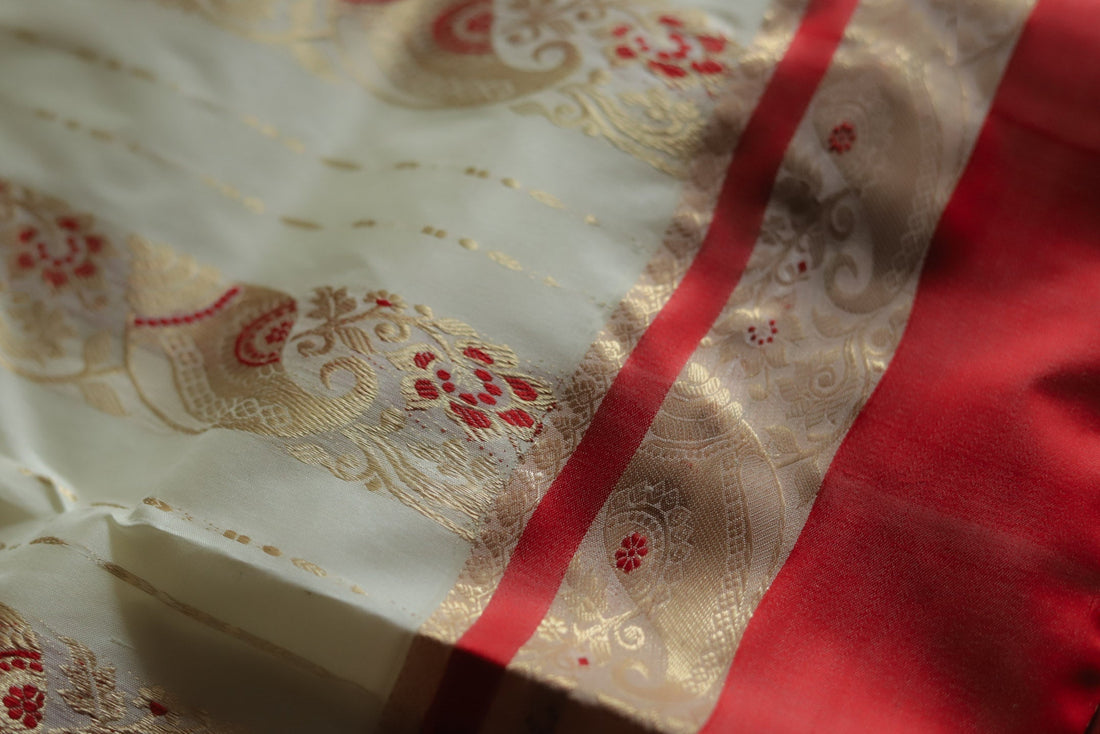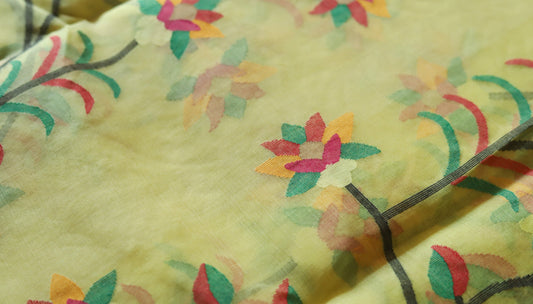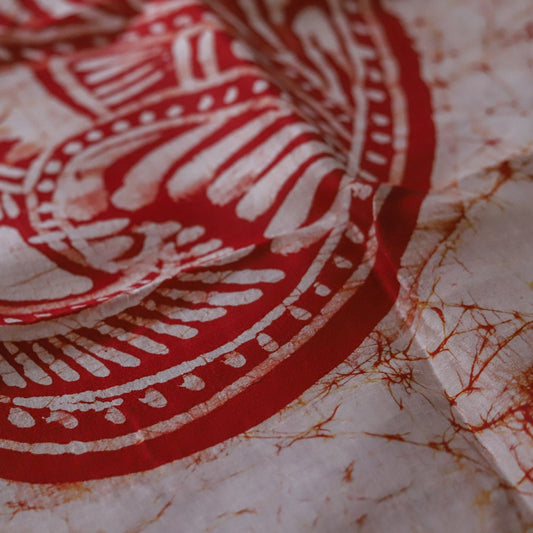
The Sacred Thread: Red and White Wedding Traditions Across India
While red and white sarees are widely associated with Bengali wedding traditions, lesser known are the diverse interpretations of this sacred color combination across other Indian states, each symbolizing the universal themes of purity, prosperity, and marital bliss through their unique regional expressions.
Gujarat: The Panetar Legacy Gujarati brides traditionally wear the iconic "Panetar" saree featuring a white base with vibrant red borders and intricate mirror work embellishments. These handwoven masterpieces are gifted by the bride's maternal family with traditional Bandhani tie-dye patterns. The white symbolizes purity and new beginnings while red borders signify prosperity and marital bliss.
West Bengal: The Timeless Tradition Bengali brides embrace the classic "lal par shada" (red border white) saree as the quintessential choice for weddings, representing divine feminine power and spiritual purity. These silk sarees with intricate gold zari work connect brides to Goddess Durga and their transition into married life. The tradition spans centuries with documented red and white motifs appearing in ancient Pala dynasty sculptures.
Tamil Nadu: The Koorai Heritage Tamil brides honor ancient traditions through the "Koorai" saree featuring rich red silk with white or cream borders, essential for the "Mangalya Dharanam" ceremony. The red represents fertility and prosperity while white symbolizes pure devotion to dharmic principles, particularly significant among Tamil Brahmin communities. These Kanchipuram silk sarees with temple motifs are integral to traditional Tamil weddings.
Kerala: The Kasavu Elegance Kerala brides wear traditional "Kasavu" sarees featuring white or cream bases with distinctive red or gold borders, reflecting the state's preference for understated spiritual elegance. The white represents mental and spiritual purity while red borders symbolize entry into the householder phase of life. Many brides wear white Kasavu during ceremonies and change to red silk sarees for post-wedding celebrations.
Karnataka: The Coorg Tradition Coorg brides wear distinctive red and white silk sarees draped in the traditional "Kodagu" style with pleats at the back. The red represents the region's warrior heritage while white signifies pure intentions in marriage. These Mysore silk varieties are prized for their lustrous texture and unique draping style.
Odisha: The Sambalpuri Splendor Odishan brides choose red Sambalpuri sarees with distinctive white ikat patterns, showcasing geometric designs that represent cosmic balance between energy and tranquility. Traditional motifs include fish, conch shells, and lotus flowers, all considered auspicious for married life. Each piece is unique due to the intricate tie-and-dye process before weaving.
Assam: The Mekhela Chador Beauty Assamese brides embrace red and white through the traditional two-piece "Mekhela Chador" in the "Riha" style, featuring red Assam silk with white patterns or vice versa. The indigenous silk creates unique textures that reflect the Assamese philosophy of balancing passion with purity. Traditional motifs like elephants and lions are woven in gold threads, symbolizing prosperity and protection.



